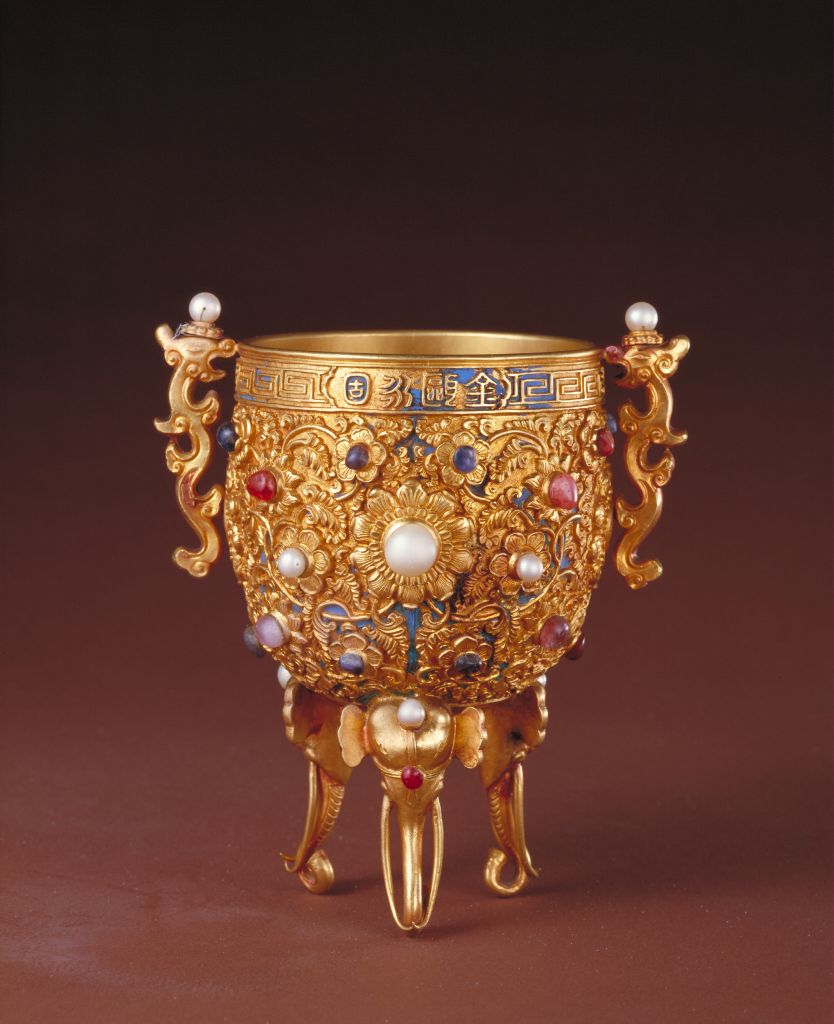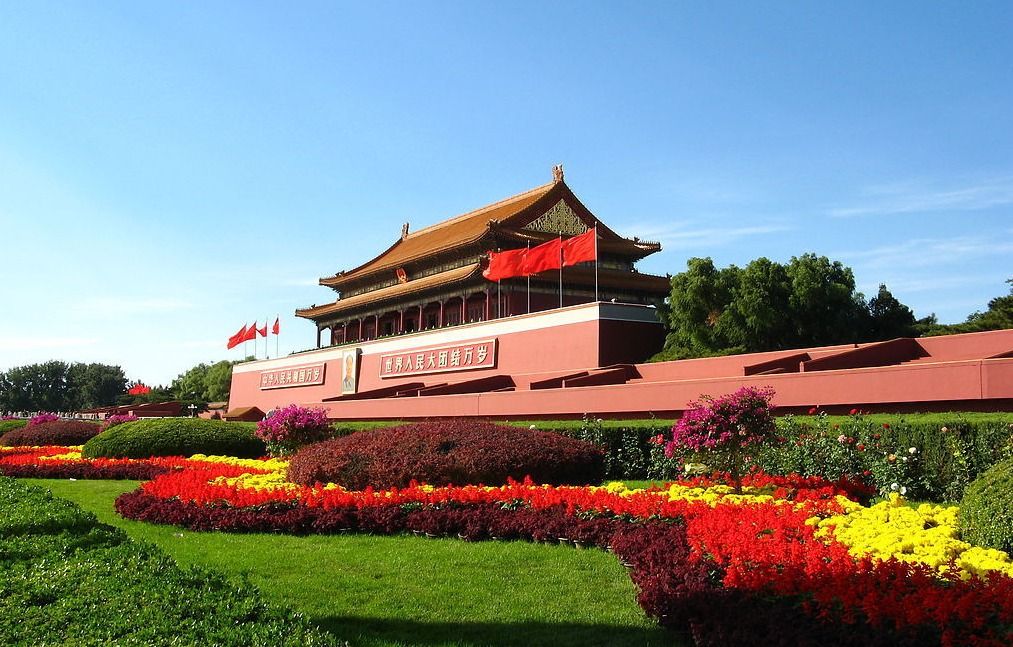
Deutsch-Chinesische Enzyklopädie, 德汉百科
 Palastmuseum Peking
Palastmuseum Peking






太和殿,俗称金銮殿或金銮宝殿[1],为北京故宫外朝三大殿中最南面的宫殿,是紫禁城内规模最大、开间最多、进深最大和屋顶最高的殿宇,也是中国现存古建筑中面积最大的一座[1][2] ,并是明清两朝北京城内最高的建筑,堪称中华第一殿。皇帝登基、册立皇后等大典都在此举行。太和殿是皇权的象征,因而在各种形式上都刻意追求与众不同。[2]
太和殿位于紫禁城南北主轴线的显要位置,明永乐十八年(1420年)建成,称奉天殿。嘉靖四十一年(1562年)改称皇极殿。清顺治二年(1645年)改今名。自建成后屡遭焚毁,又多次重建,现所见为康熙三十四年(1695年)重建后的形制。[3]太和殿、中和殿、保和殿建在一座三层汉白玉台基上,合称“三大殿”。“三大殿”和东面的文华殿、西面的武英殿等建筑合称“外朝”。三大殿位于紫禁城中轴线暨北京中轴线上。[4]
Die Halle der Höchsten Harmonie (chinesisch: 太和殿; pinyin: Tài Hé Diàn; mandschu: ᠠᠮᠪᠠ
ᡡᠸᠠᠯᡳᠶᠠᠮᠪᡠᡵᡝ .
ᡩᡝᠶᡝᠨ;Möllendorff: amba hūwaliyambure deyen) ist die größte Halle innerhalb der Verbotenen Stadt in Peking, China. Er befindet sich in der zentralen Achse der Stadt, hinter dem Tor der Höchsten Harmonie. Die Halle der höchsten Harmonie, die auf drei Ebenen aus Marmorstein errichtet wurde und von bronzenen Räuchergefäßen umgeben ist, ist eine der größten Holzkonstruktionen in China. Sie war der Ort, an dem die Kaiser der Ming- und Qing-Dynastien ihre Inthronisierungs- und Hochzeitszeremonien abhielten. Der Name der Halle wurde im Laufe der letzten Jahrhunderte mehrmals geändert, zunächst Fengtian Dian (奉天殿), dann 1562 Huangji Dian (皇极殿) und 1645 durch den Shunzhi-Kaiser der Qing-Dynastie zum heutigen Namen.
Zusammen mit der Halle der zentralen Harmonie und der Halle der Bewahrung der Harmonie bilden die drei Hallen das Herzstück des Äußeren Hofes der Verbotenen Stadt.






 Art
Art

 Architecture
Architecture
 History
History